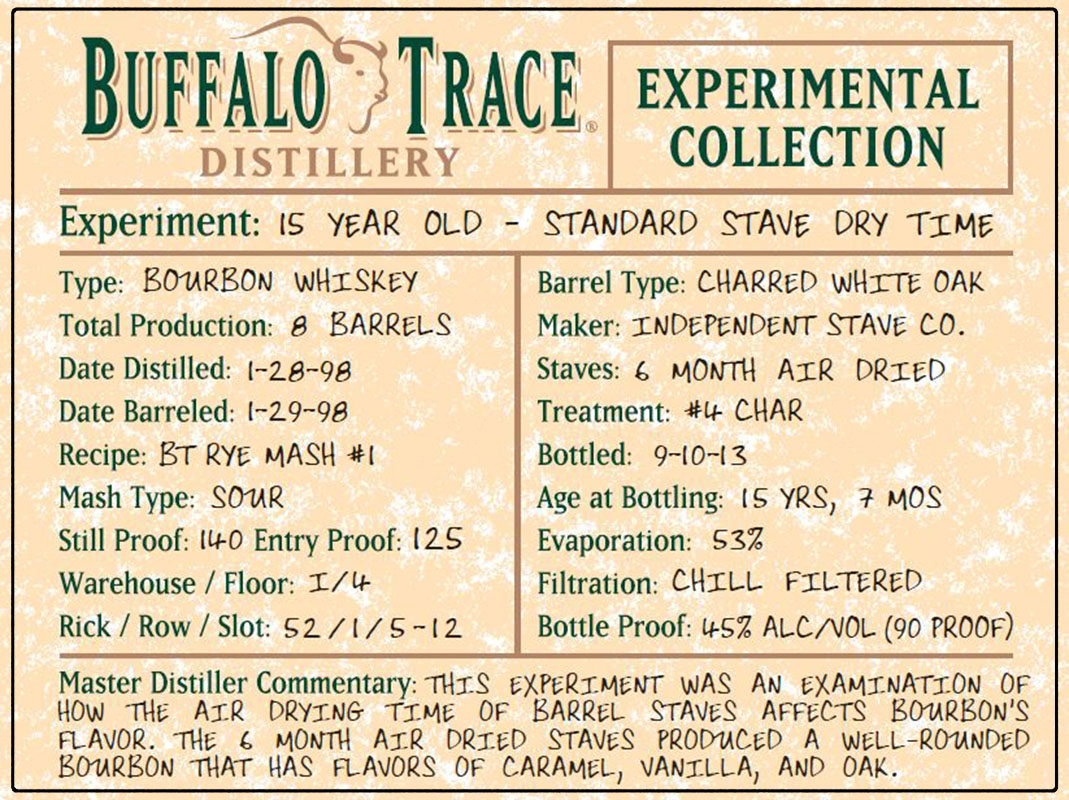2013 Releases
Release 12: Hot Box & Heavy Char #7
This was an exploration of how extreme heat used on oak barrels can alter the bourbon flavor profile. One barrel was exposed to 3½ minutes of charring by natural flame, a Heavy Char #7. The other barrel was made from staves that were steamed in a “Hot Box” at 133 degrees Fahrenheit before being charred at the standard char #4, 30 seconds of charring.
-
Hot Box Toasted Barrel
Barrel staves were placed inside of a "Hot Box" at 133 degrees Fahrenheit and steamed before being fashioned into a barrel. The goal was to determine if this steaming process would drive more or different flavors into the wood that would in turn be imparted on the whiskey aged inside. The barrels were filled with Buffalo Trace Rye Bourbon Mash #2 and left to age for 16 years. The resulting bourbon is well-balanced with fruity notes complimented by a caramel and buttery taste.
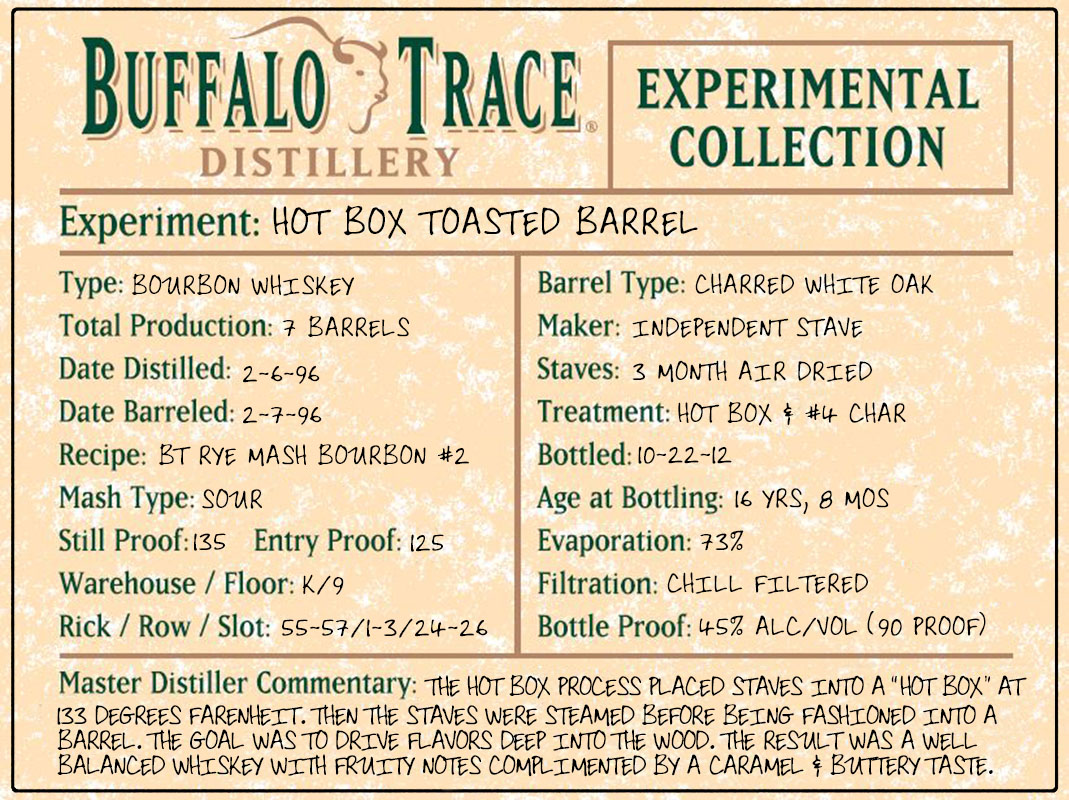
-
#7 Heavy Char
Barrels were charred with a natural open flame for 3½ minutes, almost four times longer than the standard 55-second char typically used for Buffalo Trace barrels. The barrels were then filled with Buffalo Trace Rye Bourbon Mash #2 and left to age for 15 years. The end result is a bourbon with an oaky aroma followed by a body that is heavy and complex. It has a smoky and robust flavor, with fantastic woody notes and hints of vanilla, fruit and tannin. It is dry and balanced.
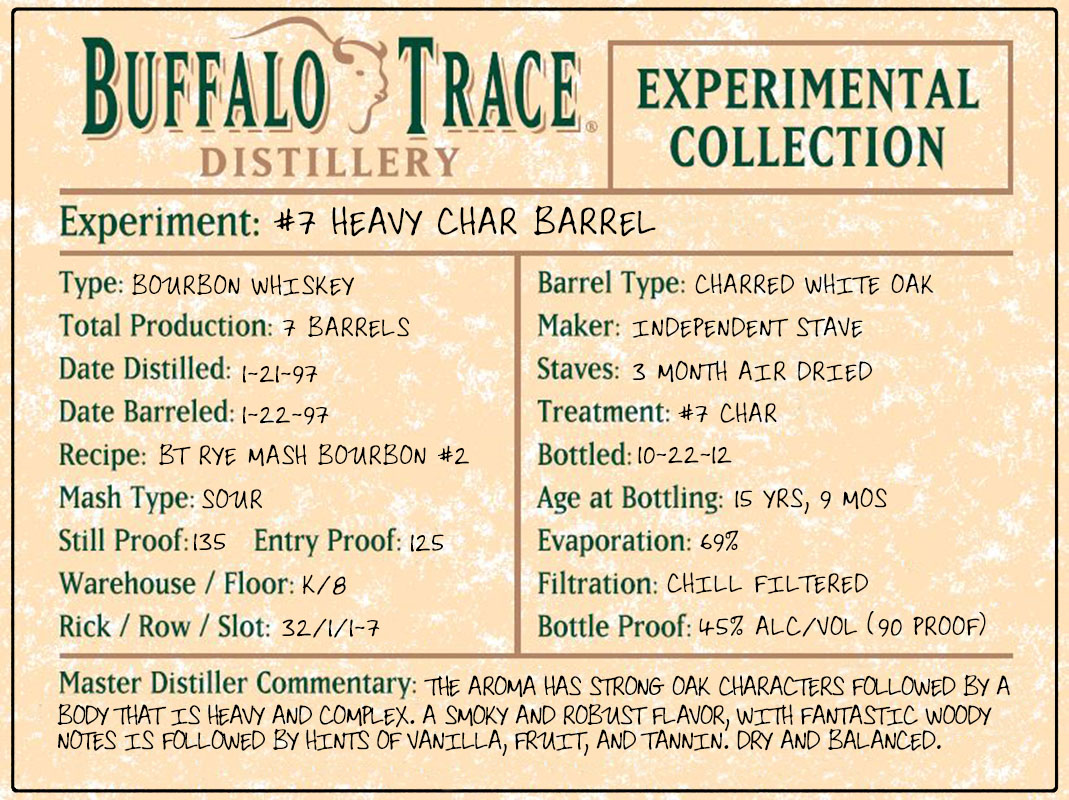
Release 13: Wheat Bourbon Entry Proof
This experiment investigated how various barrel entry proofs can influence the flavor profile of Buffalo Trace Distillery's standard Wheat Bourbon mash bill. These barrels all had varying entry proofs from the standard entry proof usually used for Wheat Bourbon, 114. All of the barrels were aged in the same location for 11 years and seven months, and bottled at 90 proof.
-
Wheat 90
This 90 entry proof resulted in a bourbon with more wood characters and slight sweet notes. It is mellow with hints of cedar and other wood flavors.
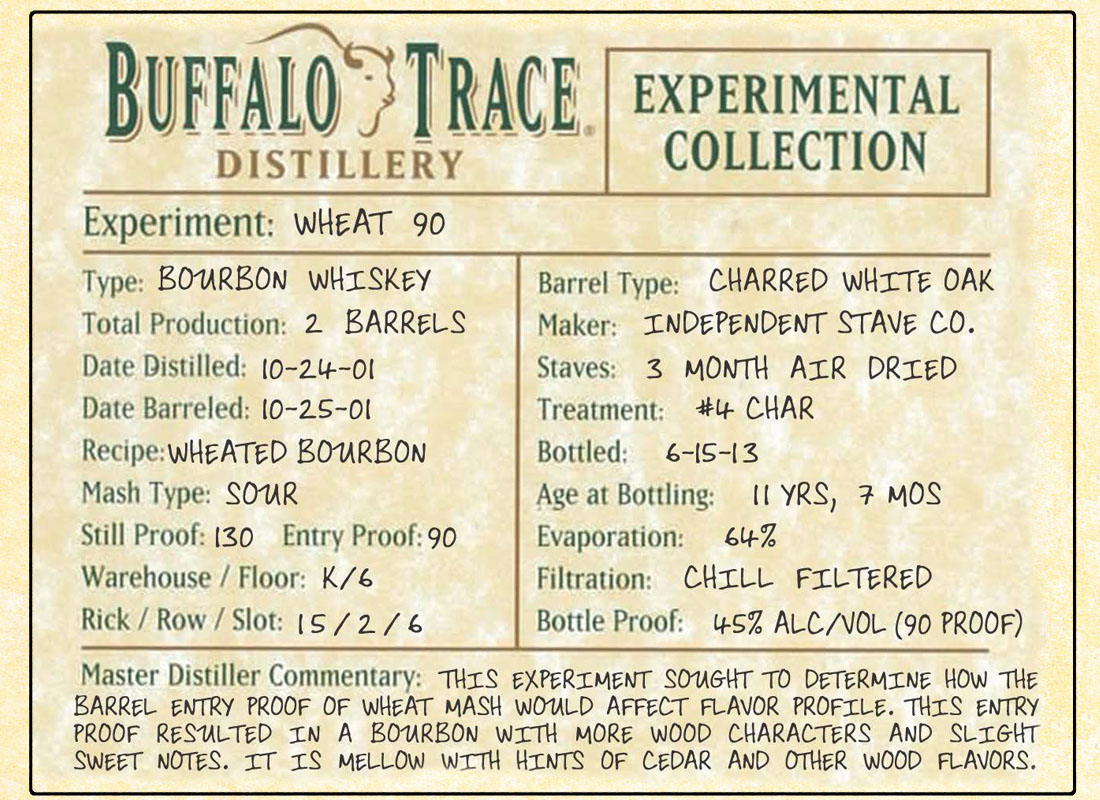
-
Wheat 105
105 entry proof produced bourbon that has a nice balance of sweet caramel, vanilla and dry oakiness.
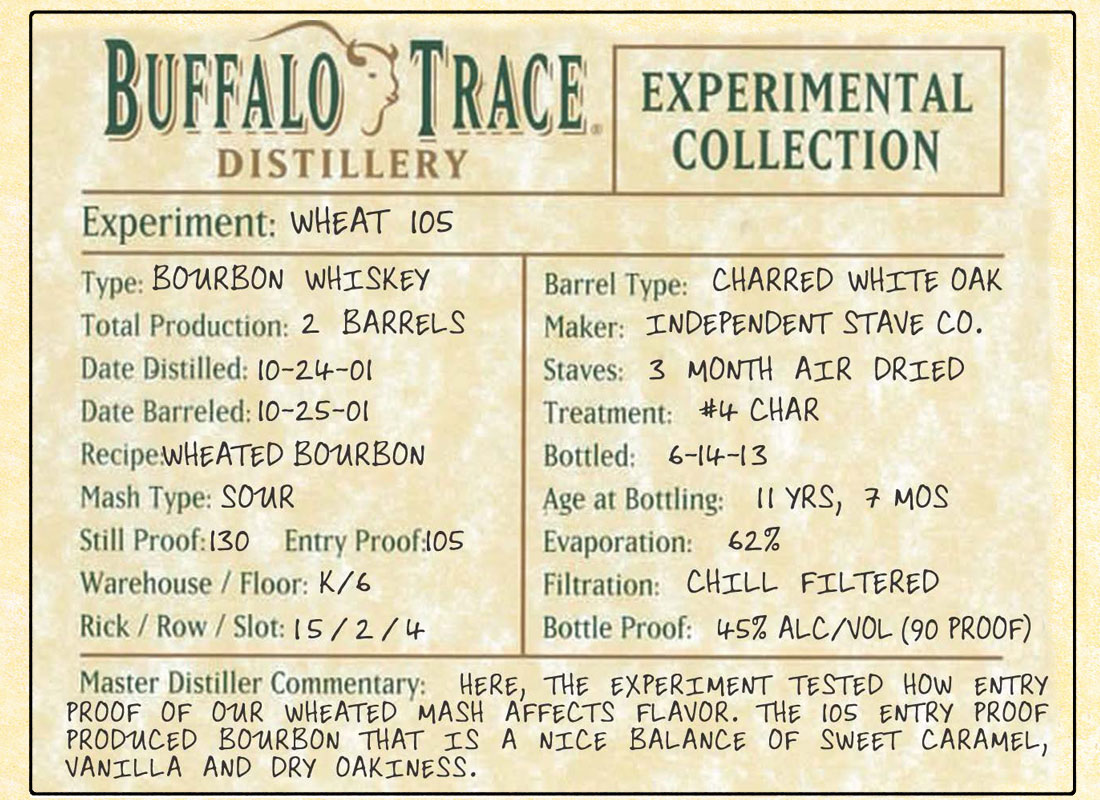
-
Wheat 115
The 115 entry proof produced a well-balanced spirit. The up-front taste is sweet and fruity, with buttery toffee notes that follow. This is completed with a dry oaky finish.
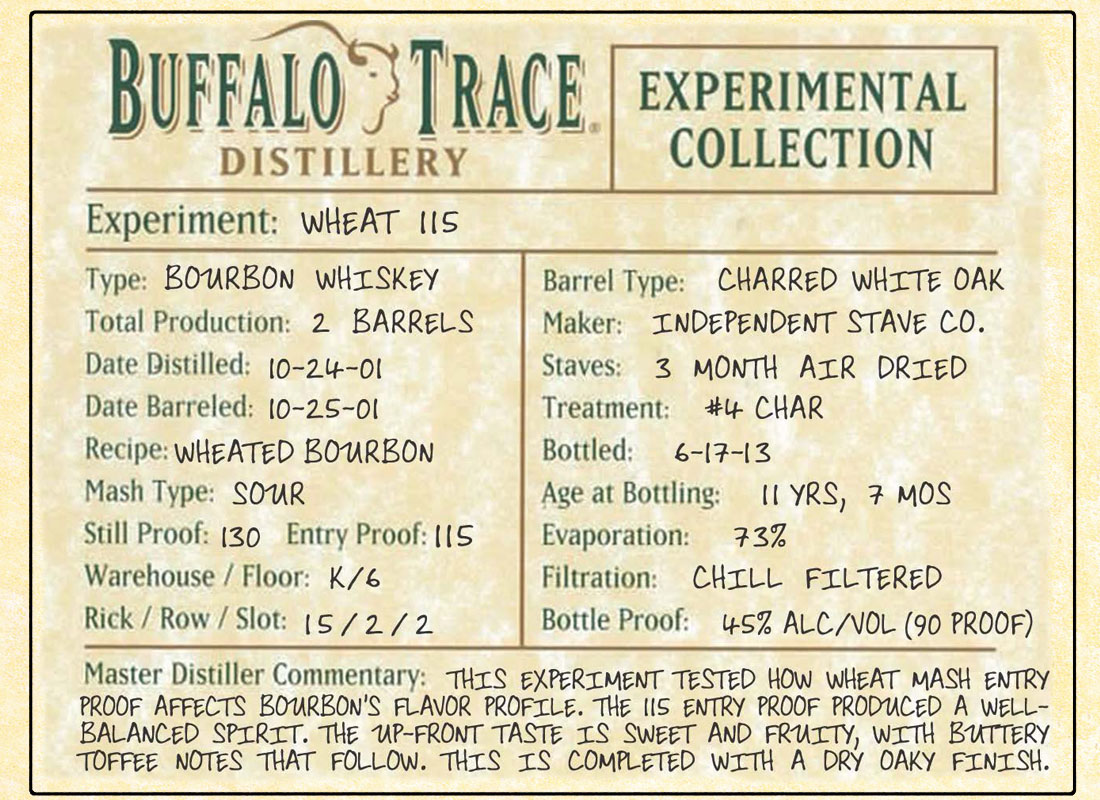
-
Wheat 125
The 125 entry proof resulted in a well-rounded flavor. The taste is a balance of cooked berries mingled with sweet honey and slight hints of spicy cloves and pepper.
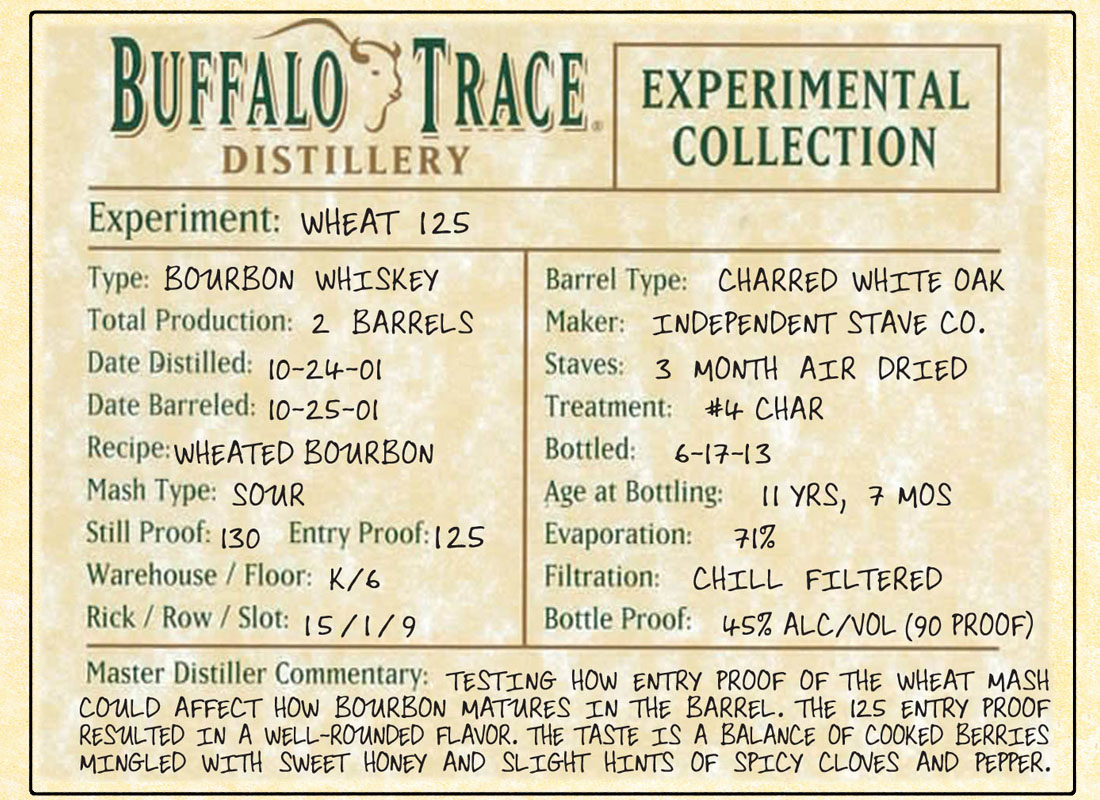
Release 14: Stave Drying Time
This experimental bourbon explored how barrels can be constructed in different ways to affect bourbon taste. Two different types of barrels were made. One crafted from oak staves dried naturally in the open air for six months, and one from staves dried for 13 months. Both barrels were crafted from American white oak, charred for 55 seconds, filled with same bourbon mash bill, Buffalo Trace Rye Bourbon Mash Bill # 1, and aged for 15 years.
-
15 Year Old - Extended Stave Dry Time
These barrels were constructed from staves that were seasoned in the open air for 13 months. This is more than twice a long as the standard stave drying time used for Buffalo Trace's barrels. This led to a bourbon that tastes of sweet nuts balanced with mild spicy notes, creating a robust flavor.

-
15 Year Old - Standard Stave Dry Time
Staves were seasoned for the standard six months in the open air environment before being fashioned into aging barrels. A well-rounded bourbon with flavors of caramel, vanilla and oak is expressed from these barrels.
